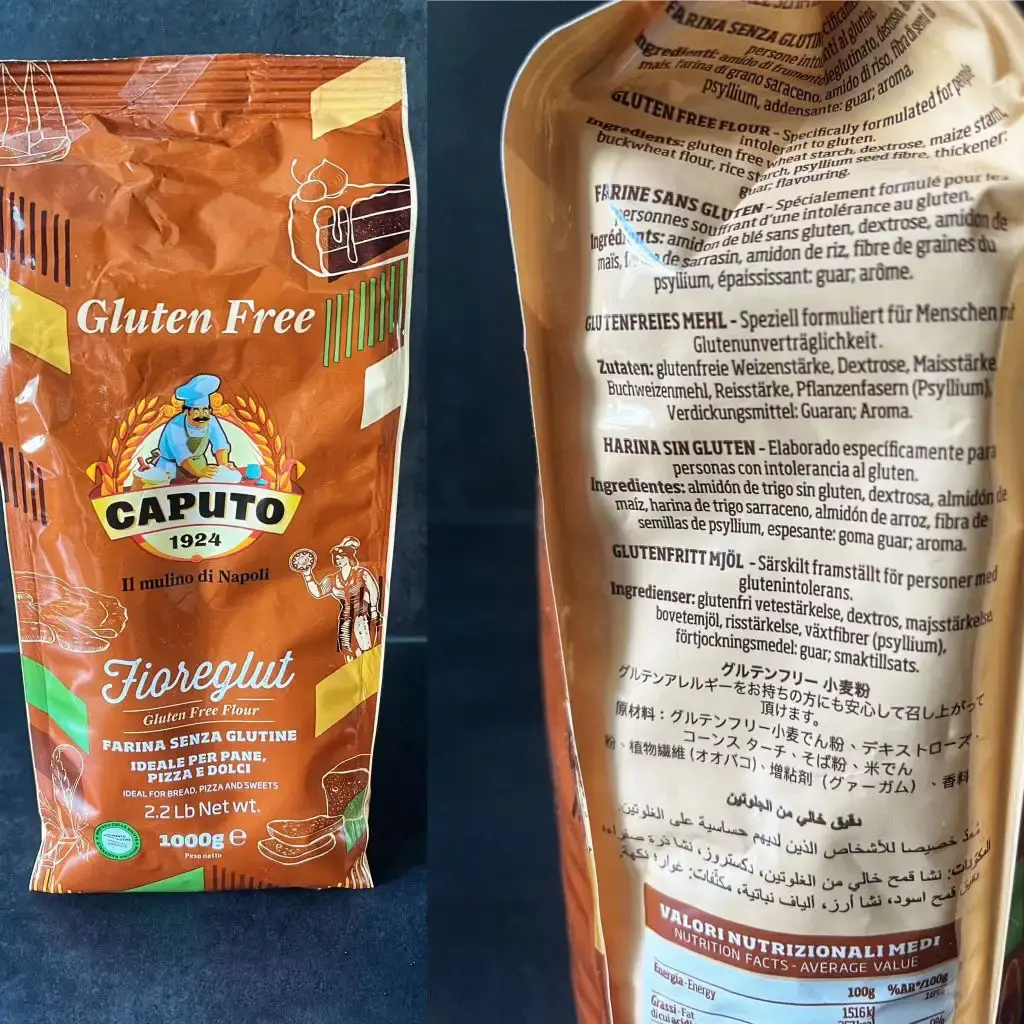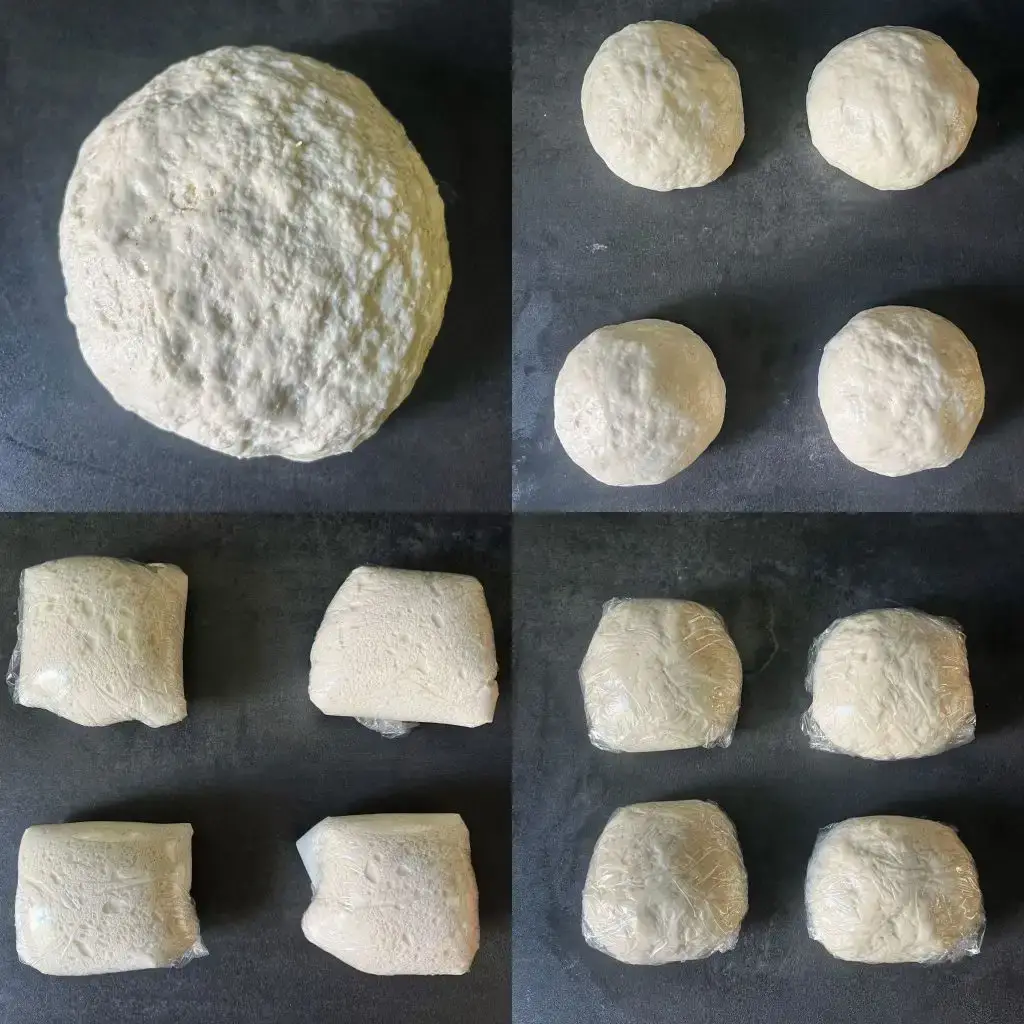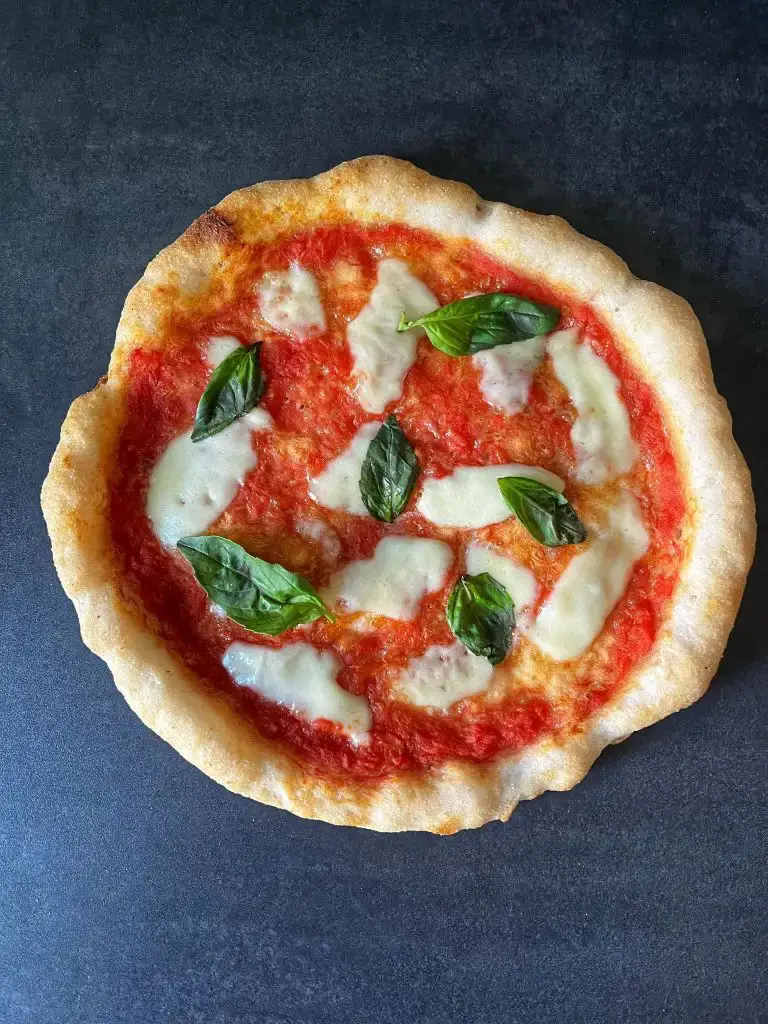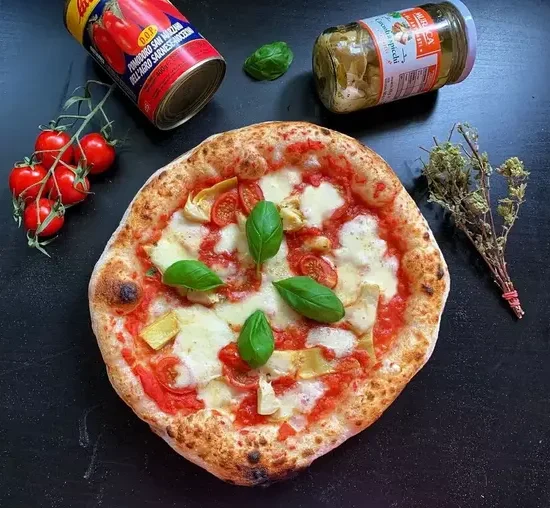More and more people are struggling with gluten intolerance or want to consciously avoid gluten. Therefore, it is not surprising that we often receive questions about how to make a gluten free pizza. That’s why we’ve made it our mission to develop not just any gluten free pizza recipe but one that comes as close as possible to a delicious and authentic Neapolitan pizza.
And one thing we can tell you in advance: with this recipe it is possible! We even claim: if you follow this recipe for a gluten free pizza, you won’t notice the difference to a pizza that contains gluten! We know that you hear this phrase all too often (and then it’s not true) but after trying and test eating it several times, we can really confirm it! Bake a gluten free AND delicious pizza? Yes, you can with this recipe. Try it out yourself!
What to keep in mind when making a gluten free pizza?
Gluten free flours
Before venturing into making a gluten free pizza, there are a few things you should be aware of. As the name suggests, gluten free products lack gluten. Especially in pizza doughs, gluten is actually essential (you can also read more about this in our article on pizza flour). This is because the gluten network ensures that the air (to be precise: gases) created during the dough maturing process is held in the dough, making the dough elastic and ultimately resulting in an airy and light pizza.
Fortunately, there are now more and more gluten free flour blends on the market that make gluten free pizza enjoyment possible. These flour blends often contain rice, potato or soy flour. Due to the different nature of these flours, it takes more water in the dough compared to flours containing gluten. Unfortunately, the flour blends for gluten free pizzas are more expensive than gluten-containing flours because they are special blends and are also produced in smaller quantities than the flours containing gluten.
For the recipe we have used the flour mix Fioreglut from Caputo (see image), with which we have achieved very good results. The list of ingredients of Fioreglut consists of gluten-free wheat starch, dextrose, maize starch, buckwheat flour, rice starch, psyllium seed fibre, guaran as thickener and flavouring.
We cannot guarantee that this recipe will work with flour blends from other brands, which may have different compositions than Caputo’s Fioreglut.

Processing gluten free pizza dough
There are also things to keep in mind when processing gluten free pizza dough. Due to the lack of gluten structure, gluten free pizza dough is more prone to tearing. Therefore, special care must be taken when kneading, shaping and putting the dough to the pizza peel (you can find the exact instructions in the recipe).
Recipe for the gluten free pizza
Before we introduce you to the recipe, we would like to briefly share with you our own experience of various recipes for gluten free pizzas. As with gluten-containing pizzas, there are also different recipes or flour combinations for gluten free pizzas. Either you use already mixed flour mixtures (e.g. Caputo Fioreglut) or mix them yourself. Flour combinations as described range from rice flour and potato flour to more exotic ingredients such as millet flour, quinoa flour, xanthan gum or tapioca starch.
We have tried both variants. From our own experience, we recommend the ready-mixed flour blends because the overall the results were better – both in terms of the processing quality and consistency of the dough and the taste of the baked pizza. Therefore, in the following we would like to present only the recipe with which we have achieved the best results and which has convinced us the most in terms of taste.
Ingredients for the dough
(for approx. 4 dough balls of 225 gr each)
- 415 gr water
- 500 gr Caputo Fioreglut flour
- 13 gr salt
- 1 gr fresh yeast (or 0.3 gr dry yeast)
- 4 gr olive oil
Additionally for the other work steps:
- Some olive oil for the work surface and for oiling the edge of the dough
- Rice flour for shaping the pizza
Preparing the dough
The dough can be made both by hand and machine. We have prepared it by hand in this case.
- Dissolve the yeast in the water (by hand or with a fork) in a bowl.
- Then slowly add the Caputo Fioreglut flour and mix it with the yeast-water with your hands so that no lumps form.
- After adding about half of the Fioreglut, now add the salt.
- Then slowly add the second half of the flour, meanwhile using your hands to mix the flour with the water, making sure that a lump-free, homogeneous mass is formed. Note: The dough of a gluten free pizza is very sensitive. Therefore, compared to the dough of a gluten-containing pizza, you must be more patient and gentle with the dough. Rather squeeze the dough by hand to avoid lumps.
- After incorporating all the flour, further knead the dough on the work surface.
- To do this, lightly coat the work surface with olive oil, place the dough on it and pour the 5 gr of olive oil on the dough.
- Now gently knead the olive oil into the dough and shape it into a round ball.
- Then divide into four portions of equal weight and form them again also into firm balls.
- Wrap each of the four dough separately airtight in plastic wrap and place them in the refrigerator for 36 hours.
Below you can see the summary of the production steps in picture form (clockwise):

Shaping and topping the gluten free pizza
- After 36 hours of resting in the refrigerator, you can use the dough directly (you do not need to wait a few hours for the dough to reach room temperature, as is the case with gluten-containing dough).
- Now sprinkle the work surface with a little rice flour.
Alternatively, if you bake the pizza in a home oven: use baking paper as a base to make it easier to get the dough onto the pizza peel or baking tray. - Place the dough on the work surface and lightly cover all sides with the rice flour.
- Now the somewhat challenging part begins: gently press the dough with your hands from the center towards the edge, leaving some space for the edge. Important: in this step you should press the dough carefully and slowly, because the dough is more prone to tearingdue to the lack of gluten network. Spread the dough until it reaches your desired size.
- Then rub the edge with a little bit of olive oil using your fingers or a brush. This will help give the crust a little more browning and crispness during the later baking process.
- Now top the pizza as desired.
Baking the gluten free pizza
In the pizza oven
- Pre-heat the pizza oven to 400 degrees at least 1 hour before baking. In this case, we used the Ooni Koda 16.
- Push the pizza peel, preferably one that is as thin as possible (e.g. made of aluminum; wood is not so suitable) under the pizza. Important: do not pull the topped pizza once it is on the pizza peel because as it will likely tear apart (you can do this with a dough that contains gluten to slightly adjust the shape or size).
- Put the pizza in the oven and bake for about 90 seconds (a little shorter or longer, depending on your own preference and degree of browning).
This is what the finished gluten-free Neapolitan pizza looks like from the pizza oven


Isn’t the result amazing? We wouldn’t have thought that a gluten free pizza can have such an airy and light edge.
In the household oven
You can, of course, bake this Neapolitan pizza recipe in a home oven. Just be aware that the pizza won’t taste and look 100% like a pizza made in a 485 degree pizza oven. But you can at least come close and still bake a very tasty pizza!
- Pre-heat the oven at least 1 hour before baking on the highest setting with top/bottom heat. If you have a pizza steel or pizza stone, heat it up at the same time!
- Push the pizza peel, preferably one that is as thin as possible (e.g. made of aluminum; wood is not so suitable) under the pizza. Important: do not pull the topped pizza once it is on the pizza peel because as it will likely tear apart (you can do this with a dough that contains gluten to slightly adjust the shape or size).
- Place the pizza on the baking tray or pizza stone/steel and bake it for approx. 7 minutes (depending on your own preference and degree of browning also a little shorter or longer).
This is what the finished gluten-free Neapolitan pizza looks like from the household oven

Conclusion
We have to say in all honesty that we ourselves were extremely pleasantly surprised at how well the gluten free pizza came out with this recipe. Especially baked in the pizza oven at 400 – 450 degrees, you can’t taste any difference to a gluten-containing pizza. We wouldn’t have thought ourselves that a gluten free pizza could taste so fluffy and light. But even baked in the household oven, the result of the gluten free pizza is worth seeing!
After a few (mis)attempts and trying around with different recipes, we can finally say with a proud chest that it is possible to make a tasty gluten free authentic Neapolitan pizza with this recipe!
Have you tried the recipe and want to share your experience with it? Did you use a different recipe? Feel free to let us know!
Discover more
You’d like to start making pizza right away, but you’re wondering where to start? We have summarized the most important information on the following page for you.
Thanks for reading! I hope this recipe for a gluten free pizza was helpful for you. If you have any unanswered questions, feel free to let me know in the comments. I’d appreciate it if you could share this content with your friends.





Do you recommend first cooking the base in a Ooni pizza over with just the tomato sauce then taking out to add the tops and putting back in? If so how long would you have each in for?
Hi William,
You can top the base directly with the tomato sauce and cook it the oven, no need to cook them separately.
You can only consider adding the cheese a little later if you don’t want it to cook too long. In this case, I would bake the base with the tomato sauce for about 2 minutes (turning in between) and then cook with the cheese for another 20-30 seconds.
Cheers, Julia
Hi there!
Thanks so much for the detailed recipe, my wife has celiacs disease and we are excited to make it! I am used to making normal pizzas and would normally use a lot more yeast, like 5gr for this amount of flour. Is 0.3 gr really correct? Thanks!
Hi Jan,
so sorry for the late reply! I just got a kid and was a bit busy with him 😉
Yes, 0.3 gram (instant dry yeast) is the correct amount of yeast for that recipe. Due to the longer cold fermentation this amount of yeast is sufficient.
Best
Julia